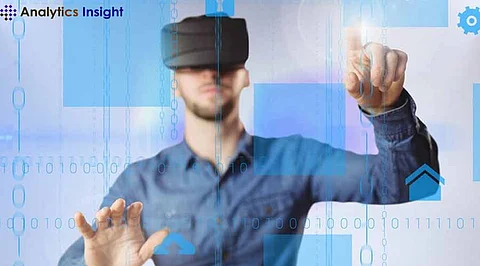

Extended reality (XR) is a combination of immersive technologies including virtual reality (VR), and augmented reality (AR), they blend the real and virtual worlds. These state-of-the-art developments have the potential to revolutionize how we engage with the digital world in a variety of contexts, including gaming, entertainment, business, and education.
Recent developments in extended reality have opened up new avenues for creativity and exploration across a range of industries, allowing users to create, interact, and explore computer-generated landscapes like never before. As XR develops further, it might transform entire sectors of the economy and alter how people engage with technology, enhancing user experiences, productivity, and communication. This article delves into the details of extended reality along with augmented reality and virtual reality.
Recent hardware innovations, including glasses and headsets, are revolutionizing how individuals interact with both virtual and real-world environments. XR emphasizes producing, interacting, and exploring in computer-generated environments. It has made great progress in several areas, including virtual production, product design, gaming, and more.
Virtual Reality (VR) immerses viewers in an entirely computer-generated environment within the realm of XR. High levels of immersion are possible with VR headsets, and these experiences have important uses in training, simulations, and gaming.
Conversely, Augmented Reality modifies the user's perception of the physical world by superimposing digital content, such as text, photos, or 3D models. Smartphones, AR glasses, or headsets can all be used to accomplish this.
By merging components of virtual and real-world surroundings, mixed reality combines the greatest aspects of both virtual and augmented reality. Users can engage with digital information that appears to coexist with the real environment because of this technology. With mixed reality (MR), digital objects can be fixed to a particular spot in the physical environment so that users can view them with a headset or pair of glasses.
The gaming business has been greatly impacted by extended reality (XR), which offers gamers an immersive and participatory experience. While VR headset games like Beat Saber and Oculus Rift select to immerse players in the virtual world, augmented reality games like Pokémon Go merge real-world environments with virtual reality. Gamers' gaming experience can be improved by using head-mounted displays, such as the Oculus Quest 2. These devices let users experience 3D environments.
Extended reality technology has begun to be used in the healthcare sector, providing new avenues for patient treatment and training. For more effective training, medical personnel utilize virtual reality to mimic surgeries and other procedures. Additionally, by exposing patients to regulated immersive situations, therapies utilizing VR or AR can benefit those with psychological problems like PTSD.
Extending reality has been used by educational organizations to enhance learning outcomes. Students can engage in mixed-reality interactions with 3D models by utilizing Microsoft HoloLens. Students who engage in immersive learning environments are better able to comprehend difficult material and remember it longer.
Extended reality technologies are being utilized more and more in the sports industry for performance improvement and training. Athletes can train in a simulated setting with real-time data analysis and feedback thanks to virtual production technology. Concurrently, supporters have a new avenue to interact with their preferred clubs due to immersive experiences like virtual stadiums.
In several ways, the retail industry has started implementing extended reality. In comparison to standard e-commerce platforms, virtual shopping experiences offer a more immersive experience by allowing users to interact with products in three dimensions. AR technologies can also lead customers through physical establishments, pointing them in the direction of particular items and giving them pertinent information.
With Extended Reality (XR), the real and virtual worlds are seamlessly combined, marking a major advancement in how we interact with digital content. As we have seen, innovations in gaming, healthcare, education, sports, and retail are redefining experiences in a variety of industries, not to mention augmenting them. Examples of these industries include virtual reality (VR), augmented reality (AR), and mixed reality (MR).
XR has the enormous potential to produce immersive, captivating, and interactive experiences that will inspire creativity and invention in ways that were not before possible. A more immersive and linked digital environment that improves our daily lives is something we can anticipate as we accept this technological evolution.
